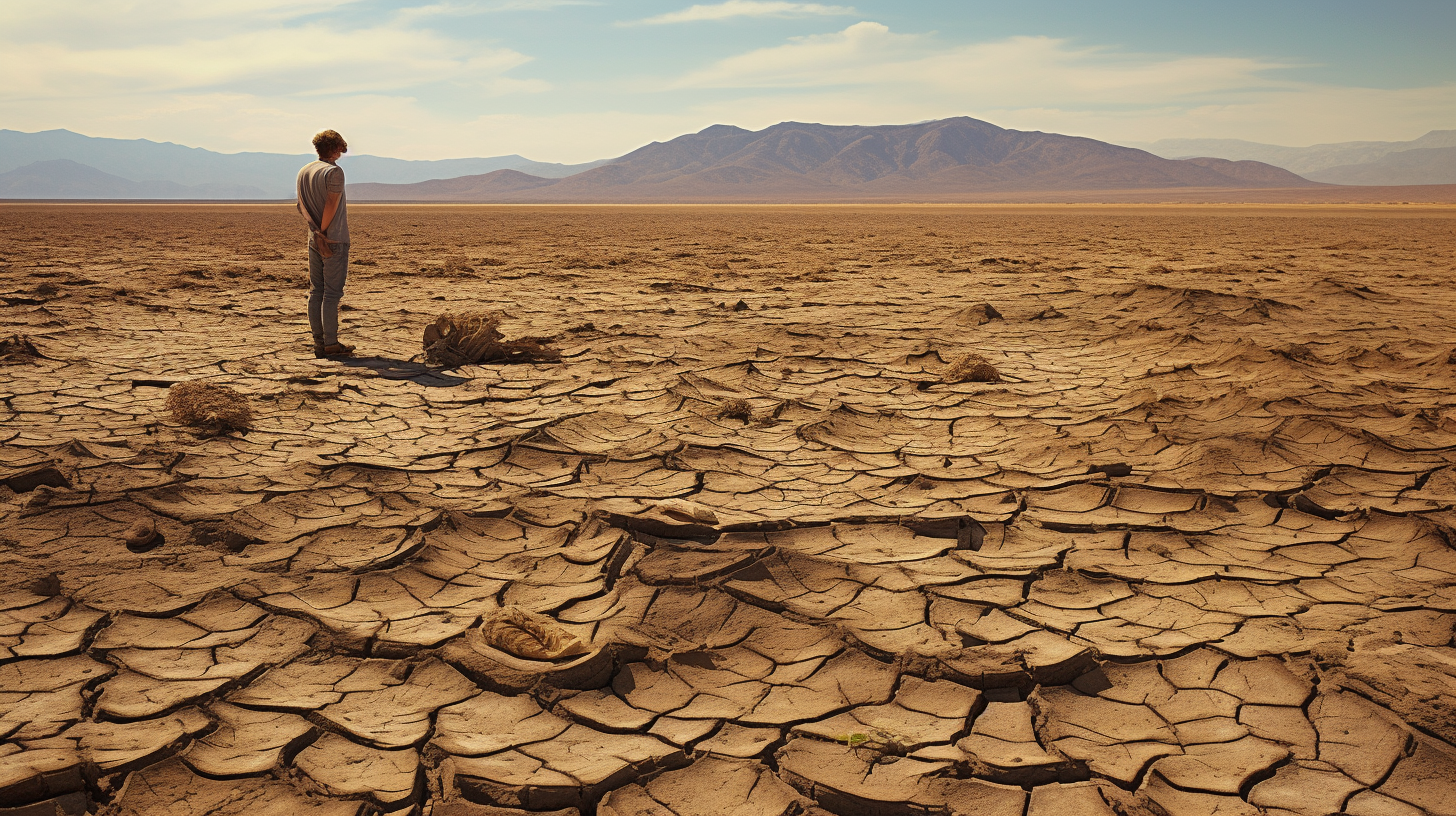In the parched whispers of the future, a world that once flourished in blues and whites now gasps under a relentless sun. No corner of the globe is spared—glaciers have vanished, taking with them the cradle of rivers, the stewards of ecosystems, and the archives of Earth’s climatic history.
‘Parched Prospects’, a somber walk through this barren landscape, exposes the stark reality of a world bereft of glaciers—giant freshwater reserves, now extinct. These icy behemoths once mantled the planet’s peaks, holding in their frozen hearts the sustenance for billions.
As we wander the desolate riverbeds, we envision the turmoil across communities. Farmers grasp at soil turned dust, while cities that thrived on glacial meltwater confront a hostile drought. Through the narrative, we follow the fictional agronomist, Dr. Maria Consuela, who laments, ‘Without glaciers, the rivers are mere memories. Our crops wither, as do our hopes.’
In this world, seasons have lost their rhythm. Spring, which once signaled the gentle thaw and flow of life, now only ticks toward an inevitable shortage. Species that relied on the icy trickle to moderate streams and spawn life now find the waters too scarce, too warm. The repercussions are grave—ecosystems collapse like a house of cards, each loss precipitating the next.
The narrative shifts to the once snow-capped mounts—‘The Sentinels,’ adorned with the purity of ice, now stand stripped, garbed in barrenness, their exposed rock faces echoing the sun’s glare. Mountain communities who revered these icy giants as deities mourn their passing while struggling to survive as their water source trickles into myth.
Climate scientists within the dystopia predictably point to the gaping fractures in weather patterns. Without glacial mass to reflect sunlight back into space, the Earth absorbs heat, tipping the scales toward extreme weather events. Monsoons turn unpredictable, hurricanes intensify; all while the oceans surge, swallowing coastlines without mercy.
The absence of glaciers reaches far beyond parched landscapes and extinct species. Hydropower, a once abundant green energy source, dwindles as consistent river flows become a relic of the past. Societies scramble to replace lost power sources, often at the detriment of the environment, locked in a tragic irony of causing further harm in attempts to adapt.
As a final reflection, the story touches on the dystopian paradox of vanishing glaciers. Their demise, while eliminating a vital water source, ironically mitigates the threat of rising sea levels—the very disaster island nations feared. A bittersweet victory, certainly, as the article conveys through the words of a fictional climate refugee, ‘We’ve escaped the flood only to face the famine.’
In conclusion, ‘Parched Prospects’ serves not only as a fictive contemplation—one that entertains with its desolate beauty and engages readers with the prospect of a dry, silent world—but also as an urgent siren. It beseeches readers to look beyond their print and reflect—is this the legacy we have chosen for our planet?
